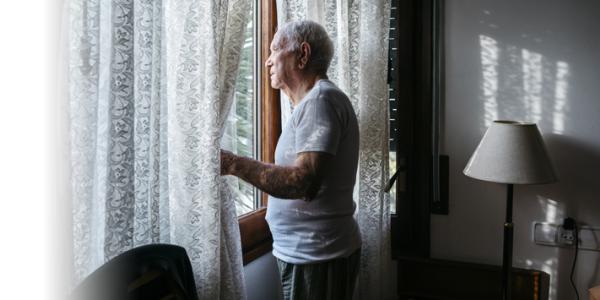
As we approach the cooler, darker winter months, it's important to be mindful of your mental health — and what you can do to proactively combat seasonal depression!
請點擊此轉換成中文
When you think about the winter season, you might think of warm fires, festive holiday decorations and spending time with family and friends. However, winter also brings darker evenings. For the more than 10 million Americans who suffer from seasonal affective disorder (SAD) each winter, these months can be especially difficult. Let's take a look at the signs and symptoms of seasonal depression — and what you can do to stay mentally and emotionally healthy.
What is Seasonal Depression?
Seasonal affective disorder (often called "seasonal depression") is a type of depression that presents only during certain times of the year — typically in the fall and/or winter. Experts don't know the exact causes of SAD, however, they hypothesize that it could be the body's response to the lack of sunlight experienced during the darker months of the year. These changes in sunlight not only disturb the body's regular circadian rhythm (impacting sleep patterns) but can also cause a drop in serotonin levels in the brain and trigger depression.
In order to be diagnosed with SAD, a patient must experience depressive symptoms for the majority of two consecutive winter seasons. Symptoms of SAD include fatigue, sleep disturbances, anxiety, feeling sad or hopeless, loss of interest in activities you typically enjoy and more. Seasonal depression can affect anyone, but those at the greatest risk are women, teenagers and those with a history of bi-polar disorder.
Tips for Staying Well This Winter
While there's no way to guarantee you won't develop seasonal depression, there are certainly steps you can take to support your mental health throughout the winter months. Even for those who haven't been diagnosed with SAD, these tips can be helpful for anyone who experiences an occasional case of the "winter blues."
- Get regular sunlight exposure. Exposure to sunlight — spending time outdoors or even simply from opening up the shades — is one of the most effective ways to treat SAD. Try to get some time outdoors in the sunlight every day. Getting sunlight exposure in the morning hours is especially helpful for boosting your energy and regulating your circadian rhythm, which can help with sleep issues.
- Consider light therapy. If you're struggling to get enough daily sunlight exposure this winter, you might consider photo-therapy (light therapy). Light therapy devices produce artificial light that mimics natural sunlight, which can stimulate your brain and trigger the release of chemicals that help regulate your mood. This can be a great tool to keep at your desk or another room where you'll spend significant amounts of time indoors this winter.
- Exercise regularly. Regular exercise is an important part of depression treatment, and it's no different for seasonal depression. This can be a great way to relieve symptoms of anxiety and, if you exercise outdoors, can also be another way to expose yourself to the sunlight. Whether it's hiking, biking or simply walking around the block, regularly moving your body this winter is a sure-fire way to improve your mood.
- Spend time with loved ones. As the days grow shorter and darker, it can be tempting to self-isolate at home. But spending time with friends and family is so important — and a great way to elevate your mood! Next time you’re feeling down, fight the urge to be alone and reach out to someone you trust — even just a quick phone call can brighten your day.
- Monitor your vitamin D intake. Some research indicates that a lack of vitamin D may contribute to the development of seasonal depression. If you suffer annually from SAD, talk to your doctor about increasing your intake of vitamin D.
Tips for Navigating Seasonal Affective Disorder
While there is no one-size-fits-all treatment for SAD, there are lifestyle changes and several other options to explore with your doctor including:
- Psychotherapy. A therapist can help you identify negative thought and behavior patterns and work with you to develop healthy ways to cope with your symptoms. If the first mental health professional you talk to isn’t a good fit, consider giving it another try with someone new — it can take a few tries to connect with someone!
- Medication. While not the first-resort for symptoms of the winter blues, if you struggle annually with SAD, antidepressants — such as Selective Serotonin Reuptake Inhibitors (SSRIs) — could be an effective treatment option. While antidepressants are effective for many people, it can take several weeks to see improvement. Your doctor can work with you to find the right medication for your needs and symptoms.
Everyone has down days — that's perfectly normal! However, if you think you could be suffering from SAD or another form of depression, talk to your doctor right away. With the right treatment, seasonal depression doesn’t have to leave you struggling until spring!
This article first appeared in the November 2022 edition of the HealthPerks newsletter.

